Practicing the Bridges in Mathematics Grade 4 Home Connections Answer Key Unit 1 Module 3 will help students analyze their level of preparation.
Bridges in Mathematics Grade 4 Home Connections Answer Key Unit 1 Module 3
Bridges in Mathematics Grade 4 Home Connections Unit 1 Module 3 Session 2 Answer Key
Multiples, Flowers & Cards
Question 1.
When you count by a number, you are naming the multiples of that number. For example, if you skip-count by Ss, you are naming the multiples of 5: 5, 10, 15, 20, 25, and so on. In each sequence below, fill in the missing multiples.
ex 5, 10, 15, 20, 25, 30, 35
a. 3, 6, ____, 12, 15, 18, ____, 24
Answer:
Multiples of 3 are
3, 6, 9, 12, 15, 18, 21, 24.
b.
6, ___, 18, ____, 30
Answer:
Multiples of 6 are
6, 12, 18, 24, 30.
c.
9, 18, ___, 36, 45, ___, 63
Answer:
multiples of 9 are
9, 18, 27, 36, 45, 54, 63.
Question 2.
Circle all the multiples of the number in each number.

Answer:

Question 3.
Fill in the missing numbers.
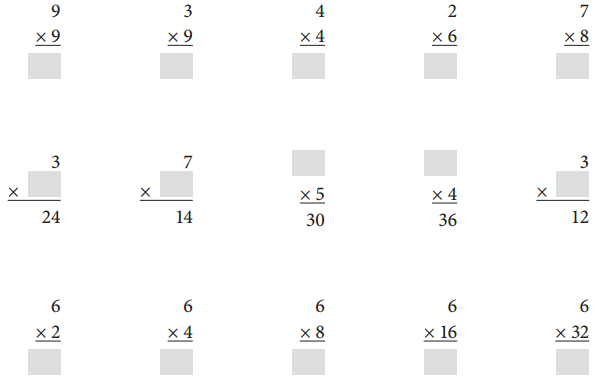
Answer:

Question 4.
Four friends were making cards to sell at the holiday sale. Each friend made 9 cards. They put all their cards together and then bundled them in groups of 6 cards to sell. How many bundles of 6 cards did they make? Show all your work.
Answer:
Given that,
Four friends were making cards to sell at the holiday sale.
Each friend made 9 cards.
The number of card are 4 x 9 = 36.
They put all their cards together and then bundled them in groups of 6 cards to sell.
The number of bundles are 36/6 = 6.
Therefore the number of bundles they make is 6.
Question 5.
CHALLENGE Zack measured a rectangular garden at the park. The longer sides each measured 15 feet and were 3 times longer than the shorter sides. If Zack walked all the way around the garden, how far did he walk?
Answer:
Given that,
The longer side of the rectangular garden is 15 feet.
The longer side is 3 times shorter than the shorter sides.
Let us consider the shorter side be x.
Longer side = 15 feet.
Therefore,
15 = 3x
Both sides divided by 3.
5 = x
The measure of the shorter side is 5 feet.
Perimeter of the rectangular garden is
Perimeter of the rectangular garden is
P = 2(length + width)
Perimeter = 2(15 + 5)
Perimeter = 2(20)
Perimeter = 40.
Therefore the total distance covered by Zack is 40 feet.
Bridges in Mathematics Grade 4 Home Connections Unit 1 Module 3 Session 4 Answer Key
Arrays & Factors
Question 1.
Draw and label a rectangular array to show two factors for each number. Do not use 1 as a factor. Then write the fact family that goes with each array that you draw.
ex 8
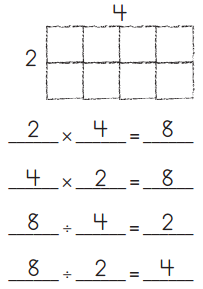
a. 14
____ × ____ = ____
____ × ____ = ____
____ ÷ ____ = ____
____ ÷ ____ = ____
Answer:
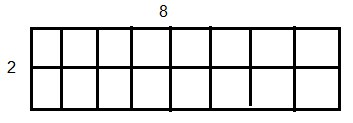
2 x 8 = 16.
8 x 2 = 16.
16 ÷ 8 = 2.
16 ÷ 2 = 8.
b. 18
____ × ____ = ____
____ × ____ = ____
____ ÷ ____ = ____
____ ÷ ____ = ____
Answer:
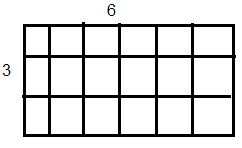
3 x 6 = 12.
6 x 3 = 12.
16 ÷ 8 = 2.
16 ÷ 2 = 8.
Question 2.
List all the factors of each number below.
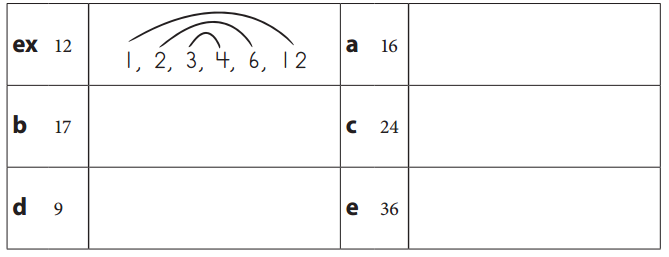
Answer:
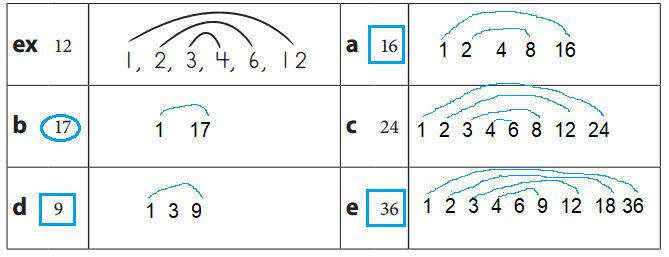
Question 3.
Circle the prime number(s) in problem 2.
a. Draw a square around the square number(s) in problem 2.
Answer:
The number 17 is the prime number.
The numbers 9, 16, 36 is the composite numbers.
Question 4.
Is the number 25 prime or composite? How do you know?
Answer:
Yes 25 is a composite number. Because 25 is divided by 5.
Question 5.
Judy has a collection of 30 stamps. She can divide the stamps into 2 equal groups of 15 stamps. What are two other ways she could divide the stamps into equal groups?
Answer:
Given that,
Judy has a collection of 30 stamps.
She can divide the stamps into 2 equal groups of 15 stamps.
2 groups = 15 + 15.
The another two ways is.
3 groups of 10.
3 groups = 10 + 10 + 10.
5 groups of 6.
6 groups = 5 + 5 + 5 + 5 + 5 + 5.
Question 6.
CHALLENGE Judy’s brother Sam has a collection of 96 comic books. What are the ten ways Sam could divide his comic books into equal groups?
Answer:
Given that,
Judy’s brother Sam has a collection of 96 comic books.
The ten ways Sam could divide his comic books into equal groups is
2 groups of 48.
48 groups of 2.
3 groups of 32.
32 groups of 3.
4 groups of 24.
24 groups of 4.
6 groups of 16.
16 groups of 6.
8 groups of 12.
12 groups of 8.